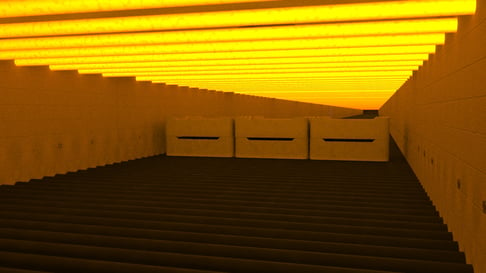Share this
What Are Different Types Of Heat Process Used For?
by Therser UK on 13-Dec-2022 10:24:41
What are heat processes? Why are they used? How many different types are there? How can Therser help you.

Sintering
Sintering is the process of compacting and forming a solid mass of material by pressure or heat without melting it to the point of liquefaction.
Calcination
Refers to thermal treatment of a solid chemical compound, mixed carbonate ores, whereby the compound is raised to high temperature without melting under restricted supply of ambient oxygen generally for the purpose of removing impurities or dangerous substances. Calcination is carried out in furnaces or kilns, various designs including pusher furnaces, rotary hearth kilns, batch furnaces.
![1200px-Fire_triangle.svg[1]](https://blog.therseruk.com/hs-fs/hubfs/social-suggested-images/1200px-Fire_triangle.svg%5B1%5D.png?width=497&height=433&name=1200px-Fire_triangle.svg%5B1%5D.png)
Oxidation/Reduction
Oxidation is the loss of electrons or an increase in the oxidation state, while reduction is the gain of electrons or a decrease in the oxidation state.
Tempering
Is a process of heat treating, which is used to increase the strength of iron-based alloys. Tempering is usually performed after hardening, to reduce some of the excess hardness. The exact temperature determines the amount of hardness removed and depends on both the specific composition of the alloy.
Debinding
The debinding process removes the primary binding material from the moulded component. Generally, there are many ways to the debinding process, and the object goes through more than one cycle to ensure as much of the binding material is taken off as possible before sintering.
Carbonization
Is the conversion of organic matters like plants and dead animal remains into carbon.

These are some of the most common heat processes. Here at Therser UK, we design and build kilns or furnaces that can help with all these different types.
Do call Therser today for an introductory chat with one of our experts and a no-obligation assessment of your requirements. Call us today on +44 (0) 1782 824453 or use our contact form.
Share this
- Company News (90)
- Battery Materials (41)
- kiln (37)
- fabrication (29)
- Alloy (27)
- Furnace (27)
- Welding (16)
- Industrial Kilns (15)
- Battery (13)
- Ceramic Kilns (13)
- Processes (13)
- alloy fabrication (13)
- Shuttle Kilns (12)
- RTO’s (11)
- Vacancies (11)
- Hydrogen (10)
- Therser UK (9)
- Tunnel Kiln (9)
- Refractory (8)
- Therser (8)
- Wellman Furnaces (8)
- Brickwork (7)
- Case Studies (7)
- Afterburners (6)
- Fibre Lining (6)
- electric (6)
- Almor Wellman (5)
- thermal engineers (5)
- Biochar (4)
- Exhibition (4)
- Pyrolysis (4)
- Servicing (4)
- Spares (4)
- heat treatment (4)
- History (3)
- Ceramics Uk (2)
- Combustion Control Upgrades (2)
- Nitrogen (2)
- Temperature Control Rings (2)
- gas (2)
- Certificates (1)
- Instrumentation (1)
- MMC (1)
- RHK (1)
- Roller Hearth Kiln (1)
- Test Trials (1)
- aerospace (1)
- analyser (1)
- elec (1)
- oxygen (1)
- vans (1)
- September 2025 (2)
- May 2025 (2)
- March 2025 (1)
- February 2025 (2)
- January 2025 (5)
- December 2024 (5)
- November 2024 (7)
- October 2024 (5)
- September 2024 (4)
- August 2024 (14)
- July 2024 (13)
- June 2024 (2)
- May 2024 (5)
- April 2024 (13)
- March 2024 (8)
- February 2024 (12)
- January 2024 (14)
- December 2023 (6)
- November 2023 (12)
- October 2023 (24)
- September 2023 (11)
- August 2023 (11)
- July 2023 (9)
- June 2023 (15)
- May 2023 (53)
- April 2023 (5)
- March 2023 (6)
- February 2023 (7)
- January 2023 (3)
- December 2022 (8)
- November 2022 (5)
- October 2022 (11)
- September 2022 (1)
- August 2022 (2)
- July 2022 (1)
- June 2022 (2)
- May 2022 (1)
- March 2022 (1)
- February 2022 (1)
- January 2022 (1)
- December 2021 (3)
- October 2021 (1)
- August 2021 (1)
- June 2021 (1)
- May 2021 (4)
- April 2021 (2)
- March 2021 (4)
- February 2021 (2)
- December 2020 (3)
- November 2020 (1)
- September 2020 (3)
- May 2020 (1)
- April 2020 (2)
- March 2020 (1)
- January 2020 (1)
- December 2019 (1)
- July 2019 (2)
- June 2019 (1)
- April 2019 (2)
- March 2019 (3)
- February 2019 (4)
- December 2018 (1)
- November 2018 (1)
- September 2018 (2)
- August 2018 (1)
- July 2018 (1)
- May 2018 (3)
- April 2018 (1)
- February 2018 (3)
- January 2018 (2)
- December 2017 (3)
- November 2017 (1)
- October 2017 (2)
- September 2017 (4)
- August 2017 (1)
- July 2017 (2)
- June 2017 (2)
- May 2017 (3)
- April 2017 (3)

